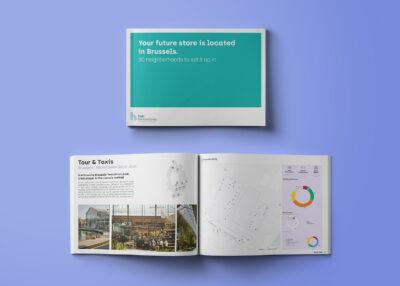
Navigating the tariff maze: a Brussels perspective from New York
Tariffs, changes in the global economy, strained trade relations — optimism may seem out of place. And yet, every obstacle can be a turning point. Especially for Brussels, which holds a not-so-secret weapon: its service-oriented exports and its unique know-how. In this article, discover insights from the East coast of the United States, thanks to our local representative Kathlijn Fruithof, who conscientiously takes the pulse of the American market on a daily basis.
Kathlijn Kruithof – Brussels Representative on the East Coast
How do you feel like the US-EU trade relations have been affected?
Kathlijn: Trade relations have been significantly affected by tariffs, leading to increased tensions. While a 90-day suspension is currently in place from both sides, the baseline of 10% remains in effect. Despite the temporary pause, economic uncertainty remains high. While strategizing how to deal with ‘unpredictable’ USA, Europe is working on strengthening partnerships with other regions.
What are the trends that you see in the reactions of the Brussels companies?
Kathlijn: Given the volatility of the announcements, there is a great deal of uncertainty at this stage. Companies are not yet asking many questions about this issue, and may therefore be waiting to see how the situation develops. This is therefore for now “business as usual”: most of the companies we support ask for introductions to potential clients or contacts; for a market study with such information as statistics, regulations, analysis of competitors and overview of pricing; help with the preparation of their prospection trip (such as setting up B2B meetings and practical information); introductions to lawyers or other consultants; in-depth information on potential clients and business partners, etc.
Which sectors are the most affected by the current or upcoming trade measures?
Kathlijn: 18% of the companies we help export to the United States are from the food and beverage sector. Beer exportations have already been decreasing for a while because of a strong competition from local craft beer. New tariffs will mean even stronger competition for our Brussels breweries.
However, Belgian beer is still regarded as a premium product by the US connoisseurs of which there are many –it is served in many excellent bars in the US. In our opinion, this is unlikely to change drastically in the near future: while a 10% tariff hike typically means that higher costs will be passed to a consumer leading to, for example, a $10 beer costing $11, most connoisseurs would most probably still be willing to pay an extra dollar for a premium product – but ultimately, competition would be definitely fiercer than before.
Moreover, it’s worth noting that worldwide demand for beer is constantly on the rise. So, as Jean-Pierre van Roy from Cantillon Brewery pointed out in an interview with our local media BX1, “The demand for our beers is currently outstripping our production capacity. If our beers don’t find buyers in the U.S., they’ll certainly find some in countries closer to home, like France”.
Are there specific industries you’re monitoring closely?
Kathlijn: Another sector that will be affected by the current or upcoming tariffs is fashion and accessories. Such companies have been participating at famous trade shows as Designers & Agents and Shoppe Object for years. This is where they find most of their US clients (typically multi-brand boutiques). They represent 13% of the companies we support here.
Shipments valued under $800 can still enter duty-free from the EU, thanks to the de minimis exemption. Although this exemption has been officially revoked for China, its enforcement is currently on hold. However, any shipment exceeding this amount is subject to tariffs.
Are there noticeable differences between the East Coast and the West Coast in terms of business climate or tariff implications?
Kathlijn: Typically, the West Coast attracts more software/digital technologies profiles, while the East Coast thrives in more “traditional” sectors such as food and beverage or fashion and accessories, which means that the West Coast deals more with services and the East Coast handles mostly goods.
As a last question, what are your most important pieces of advice for the companies in Brussels that want to export to the US, or are in a trade relation with the US?
Kathlijn: The situation is unpredictable and our companies can no longer put all their eggs in the US basket. But that does not mean that they should ignore the US, THE largest market. This situation will no doubt also bring new opportunities. We will continue to inform the companies about the evolution and new opportunities.
You’ve got further questions for Kathlijn?
Contact her or meet her in person May 20th in Brussels at the occasion of our Brussels Exporters Day! The 32 Brussels representatives of our International Network will be there as well to help you thrive in new markets.
Contact Kathlijn!

Kathlijn Fruithof
Connecticut, Maine, Massachusetts, New Hampshire, New Jersey, New York, Pennsylvanie, Rhode Island, Vermont885 Second Avenue, 41st Floor
New York, NY 10017
USA
+1 646 745 03 46
More news:

Brussels to California: keeping the American Dream alive
Posted on 27/10/2025
